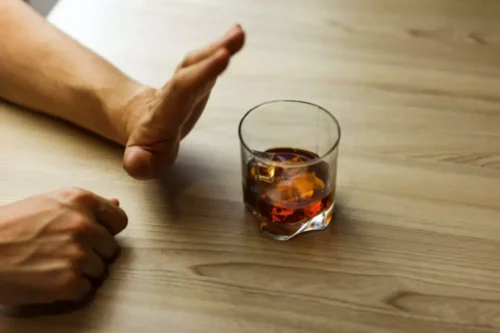
Moore’s written content for junior golf tournaments and helped to amplify the “People Not Profits” message of credit unions. When he’s not writing, Moore loves to travel, laugh and put his mental health into the hands of the Tennessee Titans during football season. The most effective way to avoid delirium tremens is to discontinue alcohol gradually, under the guidance of a medical provider. If you have an alcohol use disorder, you could be at risk of a relapse. You can avoid a relapse—which could cause delirium tremens—by getting therapy for alcohol use disorder.

Liver Disease
- The following sections provide a brief overview of several neurologic conditions related to alcohol consumption.
- It usually develops as symptoms of Wernicke’s encephalopathy go away.
- If your symptoms can’t be managed with sedatives, your doctor may prescribe anesthesia so you will be completely sedated until your symptoms end.
- For people whose bodies struggle to process alcohol, they can even last up to a week.
- Long-term heavy alcohol use sets up a tug-of-war-like effect in your body.
Others report experiencing hangover shakes in their arms, eyes, head, and even their voice. These shaky hands from alcohol can be quite debilitating and embarrassing to live with. Doing something simple, like writing or typing, with alcohol tremors becomes a lot more difficult. Alcohol tremors typically take effect around 6-8 hours after you finish drinking and peak around hours after your last drink. Symptoms of ARBD and ARBI include minor changes in your ability to think or remember things. Continued drinking with ARBD or ARBI puts you at risk for severe brain damage, including dementia.
- This specific type of trembling is most noticeable when someone makes a purposeful move towards an item or object.
- When you’re dehydrated, your body doesn’t have enough fluids to carry out its normal functions, including keeping your muscles working smoothly.
- I’ll also include additional resources if you’re curious about what it’s like to quit drinking.
- Sedatives, usually benzodiazepines, are medications used to treat alcohol withdrawal and DTs.
Causes of Alcohol Shakes
Outpatient detoxification may be the first stage of treatment for someone with a less severe substance abuse condition. Once detox is complete, most people will need further help to maintain abstinence long-term. This can come in the form of treatments like therapy or support groups. For most people with alcoholism, medical detoxing is the first step in sobering up. Engaging in appropriate lifestyle habits can also help improve alcohol shakes. Exercising regularly, eating a balanced diet, and managing stress with yoga, meditation, or other relaxation techniques can play an important role in reducing tremor frequency.

Reasons You’re Not Staying Sober (+ What To Do About It)
It is often caused by reducing or stopping alcohol intake after a period of heavy drinking. Immediate medical care is necessary for individuals experiencing delirium tremens 2. Once you’ve decided to stop drinking alcohol, it’s important to meet with your doctor. He or she can guide you toward the safest, most comfortable, and most effective plan for your sobriety.

Medical intervention may be necessary for individuals experiencing alcohol dependency, especially if they are also experiencing withdrawal symptoms such as shaking. If you have alcohol use disorder and want to reduce how much you drink or quit entirely, a primary care provider can guide you to resources and rehabilitation programs that can help. Many people feel shame or embarrassment asking for this kind of help, but your provider’s job is to help, not to judge. That way, you can reduce your drinking safely and improve your health, well-being and overall quality of life. Tremors are caused by a problem in the areas of the brain that control the body’s muscles.
- Withdrawal symptoms usually peak approximately 24 to 48 hours after the last sip.
- Although it is not a narcotic, there are still possible side effects, which could be severe.
- It may involve using certain medications and psychotherapies to decrease the symptoms, reduce the alcohol cravings and avoid the progression of tremors to delirium tremens.
- But delirium tremens is a medical emergency and requires a hospital stay.
- We offer a full continuum of care on our campus – from admissions to discharge, guiding and supporting you every step.
What causes shakiness during a hangover?
Unlike regular alcohol tremors, DT is a medical emergency and can be life-threatening if it’s not treated. DT’s are less common than regular alcohol tremors, occurring in about 5 percent of patients going through withdrawal. DT’S will typically appear around 2-4 tremors alcohol days after a person’s last drink. The symptoms of alcohol withdrawal typically begin a few hours after the last drink and peak within hours.
How is delirium tremens treated, and is there a cure?
It can vary from person to person, but they are a common symptom of alcohol withdrawal. Alcohol-induced shakes or tremors usually happen in the hands and arms but can also affect the head, tongue, and other body parts. Research has found that these tremors peak 10 to 30 hours after the last drink and can last for days.

Risks for the baby can include brain damage and developmental, cognitive, and behavioral issues. No amount of alcohol is safe to drink while pregnant, according to the CDC. Keep reading to learn about the different types of alcohol-related neurologic disease and its signs and symptoms.
The central nervous system gets “excited,” leading to tremors until the alcohol leaves the system. Alcohol shakes aren’t a sign of weakness but a sign that could lead to health complications. Hangover shakes can last anywhere from a couple of hours to a few days. For people whose bodies struggle to process alcohol, they can even last up to a week.
